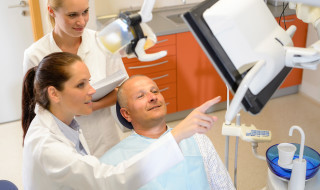
The Health and Social Care Information Centre (www.hscic.gov.uk) has published its annual NHS Dental Statistics for England.
This covers patients seen (up to June 2015), courses of treatment provided during 2014/15, most performed treatments and numbers of dentists working in the NHS.
A total of 30 million patients were seen in the 24 month period to 30 June 2015; a 6.7% increase on the March 2006 baseline but a 0.2% decrease on the previous quarter.
The figures show that 55.7% of the total population were seen by an NHS dentist in this period, a rise of only 0.1% more than in March 2006 (the month before the new contract started).
The number of children seen has increased 2.5% since March 2006, with 8.0 million children having been seen in this period.
But despite this rise, as a percentage of the population, the number of children seen has fallen 0.7%.
Dental workforce
There were 23,947 dentists working in the NHS 2014/15.
This is an increase of 224 (0.9%) on 2013/14, and 3,787 (18.8%) more than 2006/07.
Most dentists (82%) work under a GDS contract.
The number of associates continues to rise with 83.1% working under other dentists’ (or corporates’) contracts.
The number of dentists with an NHS contract stands at 4,038 (16.9% of the total).
The increase in the number of women dentists in the NHS continues.
In 2014/15, 47.1% were female, up from 38.8% in 2006/07.
Last year the number of women dentists stood at 11,285, a 3.1% increase on the previous year and 44.2% up since 2006/07.
Women dentists are in the majority amongst the under-35s (57.1%) and 35-44s (51.1%).
But men are in the majority among 45-54s (59.7%) and over 55s (75.7%).
Treatments
Fewer courses of treatment (down by 0.4%) were delivered last year, compared with 2013/14, although the figure stood at 39.6 million.
The number of band 1 courses of treatment rose by 1.6%, but those in the other bands fell, most notably 3% down in band 2.
Scale and polish remains the most frequent treatment delivered to adults with 12.9 million courses of treatment recording this item.
But for children, fluoride varnish treatments are the most common item with 3.4 million being delivered during 2014/15, (a 24.6% increase over the previous year).
Antibiotics
Antibiotic prescribing has been in the news for both doctors and dentists this week.
Treatments where antibiotic items were prescribed fell 1.7% for adults and by 3.3% for children.
Other figures showed that there was a 2.9% decrease in such prescribing between 2013 and 2014.
The report can be found at: http://www.hscic.gov.uk/catalogue/PUB18129/nhs-dent-stat-eng-14-15-rep.pdf.


